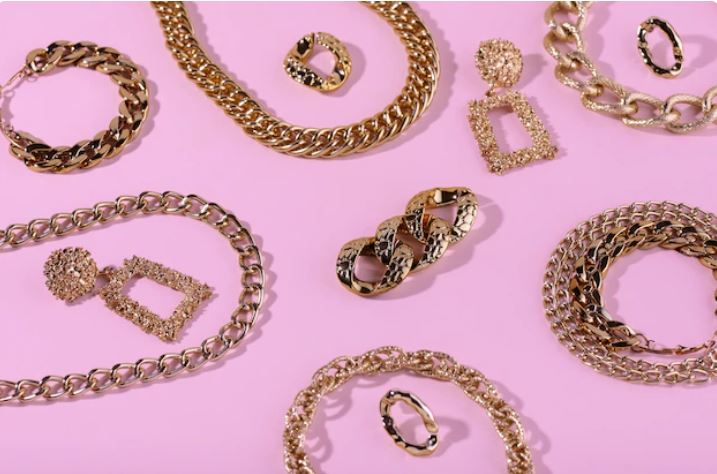Protection of Jewelry in India: Copyright or Design?
Introduction
The value of jewelry arises from its uniqueness and the value that is ascribed to its aesthetic value. Various jewelry designers have obtained IP protection for their jewelry pieces that range from trademark protection of the brand value to protection of the design itself either through copyright and/ or patents.
This IP protection ensures that other designers, whether direct competitors or producers of knock-off jewelry or imitation jewelry, do not ruin their reputation or copy their designs so as to reduce the value of their jewelry and lose out on potential sales.

From 2013 to 2015, Cartier filed various design patents for their iconic panther designed jewelry. Among the patents were a ring, pendant and necklace with the panther design. Similarly, Tiffany’s has patented their key pendant design, while Van Cleef & Arpel have IP protection of their signature Alhambra necklace. Such protection of the design of their jewelry is in addition to the trademark that they own over their logos and certain jewelry design lines. For example, beyond the trademark protection over their logo, Van Cleef & Arpel has a trademark over the name of their line of watches, ‘Poetry of Time’.
Such IP protection ensures that neither can the design be copied, nor the product line name be disfigured through any similar design line name. The effect of all this is that such jewelry is more valuable and desirable for consumers. As such, IP protection of jewelry is crucial for jewelry companies for a variety of reasons.
Position of Jewelry Protection in India
Copyright protection in India is governed by the Copyright Act, 1957 (“Copyright Act”). Copyright protection is extendable to any artistic work that is original and is creative. Section 2(c) of the Copyright Act defines what “artistic work” is. This “artistic work” includes any drawing regardless of whether it possesses any artistic quality, and also includes any other works of artistic craftsmanship. As such, to obtain copyright protection, the work in question must satisfy the definition of “artistic work”.
On the other hand, in India there is a specific legislation for protection of designs in the form of the Design Act, 2000 (“Design Act”). The Design Act defines “design” under Section 2(d) and it includes various features of a two dimensional as well as three dimensional article that has been created by any industrial process or means.
The difference between the two was explained by the Bombay High Court in Pranda Jewelry Pvt. Ltd. v. Aarya 24K. In that case, the High Court explained that any artistic work that satisfies the definition of “artistic work” would enjoy protection under the Copyright Act. However, when it is used as the basis for designing an article by way of an industrial process or means, in two- or three-dimensional form then it would enjoy a lesser period of protection as per Section 11 of the Design Act if the design so created is registered under the Design Act.
If the design is not registered in this manner, then the article will enjoy limited protection by operation of Section 15 of the Copyright Act. Section 15 of the Copyright deals with articles that would be eligible for protection under the Design Act. According to Section 15, if the article is not registered under the Design Act, then the article in question will have protection under the Copyright Act until 50 units of the article are produced. After 50 units have been produced, the copyright protection will cease to operate.
The distinction drawn by the court in this case was that while the original artistic work would continue to enjoy protection under the Copyright Act, but the industrial application of such artistic work would cease to enjoy protection by virtue of Section 15.
The court used an example to distinguish between the two acts. If a painting, in which copyright subsists, were to be reproduced then it would enjoy the protection of the Copyright Act. However, if this painting is used as a motif to produce an article, then the industrial application (i.e., using it as a motif for this article) would be protected under the Design Act, if registered, or Section 15 to the limited extent of fifty applications, if it not registered under the Design Act.
Thus, the difference in protection lies on the basis of what is intended to be protected.
It is important to keep in mind that under the Design Act, Section 4 specifically states what cannot be registered as a design. Among them is the restriction that if the design in question has already been released to the public in India or elsewhere, then it cannot be registered as per Section 4. As such, any jewelry that has been on display previously internationally or within India would not be eligible for registration.
The protection provided under the Design Act is comparable to design patents that are granted in other jurisdictions and serve the same purpose. The standards for applying for registration of a design, as per Section 4, are comparable to the one for grant of a design patent in other jurisdictions.
Beyond the design and the underlying drawings of the jewelry, India also offers protection to the trade dress through the Trademark Act, 1999 (“Trademark Act”). This is because under the definition of “mark” under Section 2(m) of the Trademark Act, the term “packaging” is also included. Further, the term “package” itself is defined under Section 2(q) of the Trademark Act and includes any vessel, box, container, and other such mediums.
Trade dress is designed to protect the consumer from purchasing a product that belongs to another, under the mistaken belief that it belongs to the well-known seller. As such, trade dress is also crucial for jewelry designers as it protects them from any other jewelry designers who wish to benefit from the reputation attached to the packaging of their jewelry.
In Cadbury India Limited v. Neeraj Food Products, the Delhi High Court granted an injunction against the defendant whose packaging was deceptively similar to the plaintiff’s. The plaintiff had a trademark of ‘GEMS’ while the defendant had one over ‘JAMES BOND’, which had packaging that the court found to be very similar, such that it was sufficient for granting an injunction.
This additional protection of trademark for articles registered under the Design Act was recognised and enabled by the Delhi High Court in Crocs U.S.A. Inc. v Aqualite India and Ors., wherein the court held that the interplay of the Design Act and Trademark Act allows for any article registered as a design under the former to obtain protection under the latter if the article in question has any additional features that would allow the article to qualify for trademark protection.
Conclusion
Through this paper we have been able to examine what kind of IP protection is available to jewelry designers in India and it is clear that while the IP protection regime in India does provide a great deal of protection to jewelry designers, there are some lessons to be learned.
A difference in the kind of protection offered under the Designs Act and the associated changes mentioned could streamline the IP protection regime in India. Incorporating such changes could improve the regime for the benefit of innovators and jewelry makers alike.
Author: Utkarsh Malviya, a fifth-year law student pursuing B.A.L.LB.(Hons.) from Jindal Global Law School, in case of any queries please contact/write back to us at support@ipandlegalfilings.com or IP & Legal Filing.


